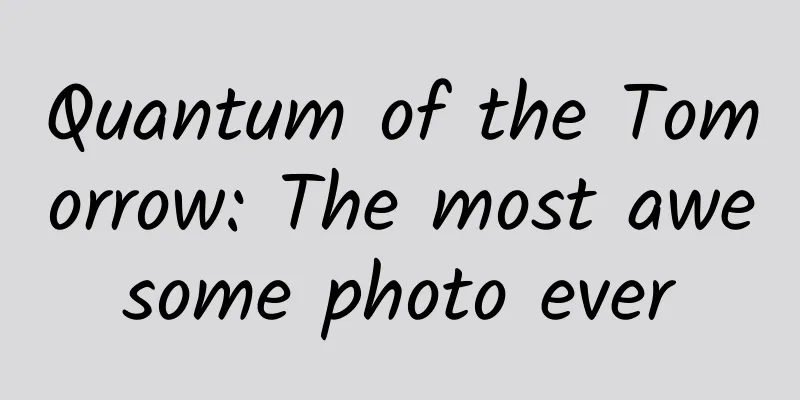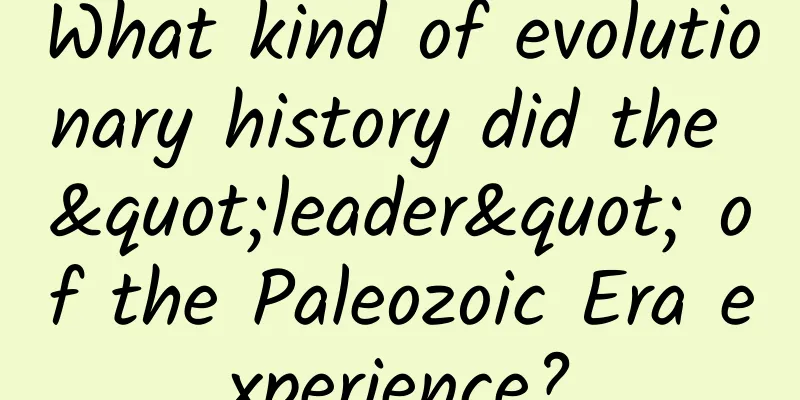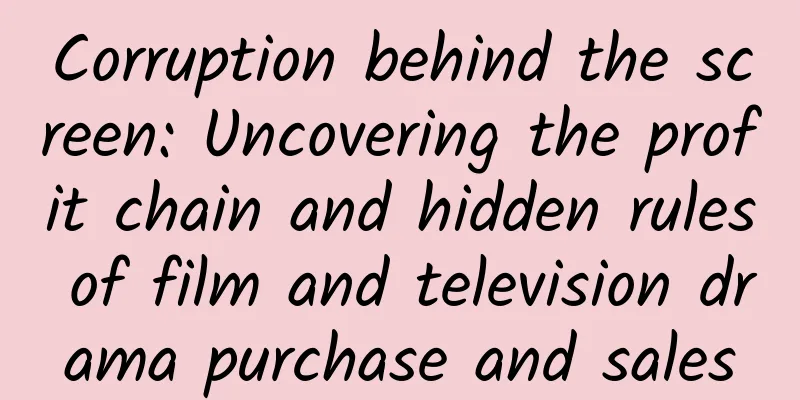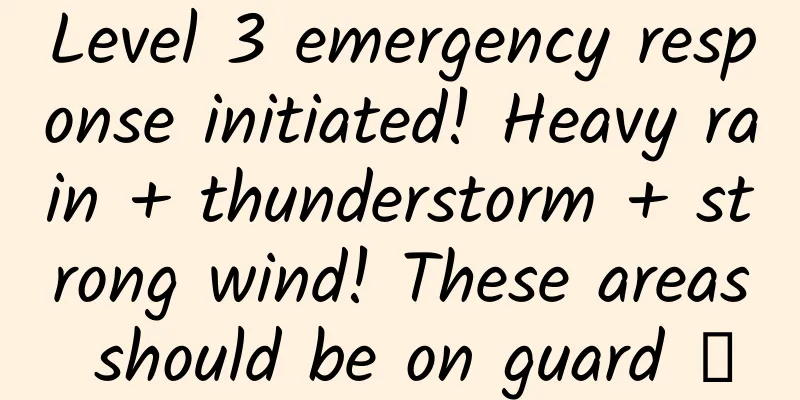Quantum of the Tomorrow: The most awesome photo ever

|
In the Southern Song Dynasty, during the Battle of Xiangyang, Huang Yaoshi, the East Evil, arranged a "Twenty-Eight Constellations" formation, divided into five elements, each with a main general: Guo Jing in the center, Master Yideng in the south, Huang Rong in the north, Huang Yaoshi in the east, and Zhou Botong in the west. They fought against the Mongol national master, King Jinlun. Yang Guo and Xiaolongnu arrived and defeated the Mongol soldiers. This battle brought together the most powerful martial arts masters in the world at that time. This is a plot from Jin Yong's novel "The Return of the Condor Heroes". On June 26, 2012, Bill Gates, Warren Buffett and other 12 richest Americans took a group photo in New York. Their combined net worth is 126 billion US dollars. This is the "richest photo". The most amazing photo in history was taken in 1927, which brought together the smartest masters in the world at that time. There is no other photo in the world that can gather so many elites of such high level in one picture. Some say that the average IQ of these 29 people is over 150. Putting these heads together is like putting all the nuclear bombs in the world together. Over the past hundred years, it was they who turned the world and people's lives upside down. As soon as this photo was released, all the heroes in the world were impressed. Such a clever photo There can only be one Who are those talented people in the photo? The one sitting in the middle was the mastermind who invented the atomic bomb; the only woman, she found the radium needed for detecting oil resources and the "Curie therapy" for treating cancer. Yes, it was Einstein and Marie Curie, the legendary godlike figures in primary and secondary school textbooks. Countless science fiction writers have become parasites in their brains. The cat in Liu Cixin's novel "Ball Lightning" was created by the sixth person from the left in the back row of the photo. Among these 29 people, 17 are Physics Champions (see picture) - winners of the Nobel Prize in Physics. Marie Curie was the Champion twice. Only nine countries in the world have ever produced Champions, a total of more than 17. Some commentators said that it is because of these people that the Nobel Prize has the authoritative status it has today. When this photo was taken, this group of people were having a famous fight, which was the most famous fight in the history of physics. The 12 who were not the leaders were all top-notch masters with unique skills. Here are three examples: Langevin on the left of Einstein was Curie's student and Madame Curie's rumored boyfriend in her later years. He had many research results and went to China in 1931 to support the anti-Japanese war. He called for unity in the Chinese physics community, which led to the establishment of the Chinese Physical Society and he became the society's first honorary member. Auguste Piccard, the Swiss physicist, is on the far left in the back row. He was the first person in the world to fly to the stratosphere at an altitude of 16,165 meters in a hot air balloon and to go to the bottom of the sea at a depth of 3,050 meters in a submarine to conduct research. His son and grandson have the same hobbies as him. The third person from the left in the back row is called Ehrenfest, a close friend of Einstein and Bohr. He was the peacemaker when they quarreled, but he failed. His contribution was also like a peacemaker. He invented the principle of gradual immersion and built a bridge between classical physics and quantum physics. He later committed suicide, but the analogy between thermodynamics and economic processes that he began to study won him the 1969 Nobel Prize in Economics from his student Tinbergen. In 1930, the bearded chairman was not found, he had passed away In 1933, the one with messy hair didn't come ■ List of main characters of Quantum Two peerless masters of the older generation And a dashing old cat The Huashan Sword Contest in Jin Yong's "The Legend of the Condor Heroes Trilogy" is held every thirty years; the Huashan Sword Contest in the physics community is held every three years, and its official name is the "Solvay Conference." The most thrilling debate was between two top masters of physics, one was Albert Einstein and the other was Bohr from Denmark. The beginning of the last century was the era of the Big Bang in physics. When humans see something new, they always have to give an explanation to feel at ease. At that time, with the discovery of X-rays, electromagnetic waves and other things, the classical physics of the predecessor Newton could not withstand it, and new skills were needed. The first move of the new kung fu was created by German physicist Max Planck. Max Planck had a great talent for music, but his university physics professor, Yoli, advised him not to study physics: "This science has been thoroughly studied, and you can only fill in the gaps for others." Planck disagreed. On December 14, 1900, when Planck was 42 years old, he proposed the hypothesis of energy quantization and the "Planck constant." From then on, quantum physics came into being. This year, Albert Einstein was 21 years old, had just graduated from university, became a Swiss citizen, and couldn't find a job. This year, Niels Bohr was 15 years old and still playing football. Later he became a famous goalkeeper in Denmark. In 1905, Bohr went to college, and the 26-year-old Einstein broke out, publishing 6 papers in a row, proposing the "light quantum (photon)", which pushed Planck's theory forward a step; he also proposed the "theory of relativity" and founded a new school of thought. Quantum mechanics and the theory of relativity are the two most earth-shaking martial arts of the 20th century. At that time, there was an industrial chemist named Ernest Solvay in Belgium. Nobel funded the prize, and Solvay paid for the scientific masters to hold a meeting in Brussels. Einstein participated in the first debate in 1911. At that time, Poincare and Marie Curie were at their peak. Einstein was only 32 years old and stood in the corner in the photo. That year, Bohr received his doctorate. In 1913, it was the turn of the 28-year-old Bohr to explode. He published three papers in a row and worked out the famous "Bohr model". British and American universities invited him and offered him twice the salary, but he wrote a letter to refuse: "I am determined to do my best to help Denmark develop its own physics research." He founded the school at the University of Copenhagen in Denmark. Einstein published the theory of general relativity and laid the foundation for laser theory, and won the Nobel Prize in Physics in 1921. Bohr was relieved when he heard that Einstein won the Nobel Prize. He was afraid that he would be too sorry if he won the prize too early. Just as Bohr was skeptical when Einstein proposed the "photon" hypothesis, Einstein was also somewhat skeptical when Bohr proposed his model. Under Bohr's model, the real world cannot be described, but Einstein tolerated it. The two met for the first time in Berlin in 1920. There was no quarrel, and the differences were temporarily hidden, but the directions were different. In 1922, Bohr won the Nobel Prize. The report said: "The Nobel Prize is awarded to the famous football player Niels Bohr." Austrian "cat" Erwin Schrödinger was a 13-year-old high school student in 1900. "Schrödinger's cat" is now very famous. He later succeeded Planck at the University of Berlin. Schrödinger was a romantic man who had countless girlfriends and wrote many love poems. He had a diary in which he recorded and coded every girlfriend and every tryst in detail. Compared with Einstein and Bohr, he was already old when he became famous, at the age of 38 - love gave him inspiration, he had a tryst with a girlfriend on Christmas, and his Ren and Du meridians were opened, and he published 6 papers in 5 months. Bohr's disciples are not inferior to others The Three Musketeers of Copenhagen in their 20s Bohr, Heisenberg and Pauli Young people are old. At that time, there were many geniuses in the physics world, and there were endless wonderful ideas. Planck's quantum theory quickly became obsolete, and a younger generation emerged. Bohr's Copenhagen School included a group of "Bohr scholars" such as Heisenberg, Pauli, and Dirac, all of whom were top masters and became the founders of quantum mechanics. Pauli the Genius of Meanness Werner Heisenberg, a German, was born in 1901. In 1920, while studying under his master, Professor Sommerfeld, at the University of Munich, he met his genius and mean senior, the fat Austrian Wolfgang Pauli, and they talked about physics nonstop as soon as they met. Pauli was born in April 1900 and published the exclusion principle at the age of 25, which means that an atom cannot accommodate electrons with exactly the same motion state. Pauli came from a wealthy family and was definitely the smartest person. After graduating from high school, he went directly to study for a master's degree under Sommerfeld. He wrote an article introducing the theory of relativity for the German Encyclopedia of Mathematical Sciences. He wrote 250 pages in total, and even Einstein was very happy after reading it: "Anyone who sees such a mature and imaginative work cannot believe that the author is just a 21-year-old student." Some people commented that he was like Ren Woxing in "The Smiling, Proud Wanderer", who only admired three and a half people in his life: his teacher Sommerfeld, to whom he was respectful all his life; Bohr and Einstein, and half of them was his junior fellow student Heisenberg. He commented on someone's paper: It's not that there is anything wrong with it, but that it's not even wrong. If someone's paper received his ridicule of "nothing wrong with it", it would be a great honor, just like the three heroes of the Zhong family in "Legend of the Condor Heroes" who were grateful to Miao Renfeng for his comment that they were "not a mean person". There is no end to the legend of Pauli. He did not care who got the results, as long as the results appeared, he was happy. Every time he wrote a letter, his buddies would compete to pass it around, because his harsh criticism was so accurate, profound, and so important. Everyone feared him and cherished him. He won the Nobel Prize in 1945. If he had not written fewer letters and more papers, perhaps his achievements would be much greater. Later generations feel deeply sorry for him. The most important walk of your life In 1922, Bohr was already famous all over the world. He was invited to give seven lectures at the University of Göttingen in Germany. At the end of the third lecture, a silly boy stood up and said to everyone: "I don't agree with your point of view!" Bohr said, "How about we communicate after the meeting?" After the meeting, they went for a walk together. Heisenberg later said: "My real scientific career began with this walk." Bohr was his third master. In June 1925, Heisenberg was allergic to pollen and went on vacation to a small island in the North Sea, where he hiked, read poetry, listened to music, and perhaps painted, which was what he liked. One early morning, he had a flash of inspiration and thought of throwing away the concept of electron orbits in the Bohr model. He wrote a paper and gave it to his second master Born. This was his matrix mechanics (roughly speaking, if you don’t understand how electrons move, you can’t observe them). At the end of the year, he, Born and Jordan collaborated on a paper, and matrix mechanics was officially born. Pauli confirmed this theory using the energy spectrum of hydrogen atoms. The birth of the brand new quantum mechanics has caused a huge change in the physics community, and everyone is trying to figure out what kind of monster it is. He is as good as Newton. Heisenberg was invited to give lectures in various places. At Cambridge University, a question from a tall and thin doctoral student with deep eyes may have reminded him of himself at Bohr's lecture three years ago. This man is Paul Dirac, half a year younger than Heisenberg. Dirac's family was unhappy, his parents were always quarreling, and his brother committed suicide. So he was very silent, and apart from mathematics, he only loved to read comic books and Mickey Mouse movies. In 1923, he received a scholarship to Cambridge University and needed 5 pounds for travel expenses, which his father gave him. Many years later, when his father passed away, he learned that the money was actually given by a local educational institution. His father saved 7,500 pounds but did not give him any money. Dirac introduced the theory of relativity into Schrödinger's theory, created the Dirac equation, and won the Nobel Prize in 1933. When he went to accept the Nobel Prize, he sat quietly in the waiting room with his mother. A group of bigwigs stood in a row on the platform, anxiously looking for his whereabouts, but he had no idea. Later, he wrote a book called "Principles of Quantum Mechanics", which some people call "the Bible of quantum mechanics". People think that he is the best among Bohr's disciples. People also think that he is the greatest master of theoretical physics in Britain after Newton. ■Sword Sect, Qi Sect and the Return of All Streams How to cultivate the superior martial arts of quantum mechanics I was so disappointed when I met Uncle Xue Heisenberg was very proud of his matrix mechanics, but suddenly the playboy Schrödinger emerged and stole the attention of the physics community from Heisenberg. Uncle Xue took one of his girlfriends to vacation at Villa Herwig in the Alps, where he worked out a "wave equation." This equation is extremely simple. When verified by the energy spectrum of hydrogen atoms, the result is the same as that of complex matrix mechanics. Brother Hai's martial arts moves are complicated, while Uncle Xue's ordinary moves contain infinite internal strength. The physics community was delighted and regarded Uncle Xue as the father of quantum mechanics, almost forgetting the frustrated Heisenberg. Bohr was angry. He invited Schrödinger to Copenhagen, and they argued day and night. Arguing is very tiring. Twenty years ago, Boltzmann, a scientist of the "atomist theory" who held the truth, committed suicide after exhausting his energy in continuous debates with others. Poor Schrödinger was exhausted and fell ill in bed with a high fever. Bohr still did not let him go and chased him to his bedside to continue arguing. Of course, no one could convince the other. By 1928, Dirac calculated that the kung fu created by Uncle Xue and Brother Hai were equivalent and were both superior martial arts! It can be seen that simplicity is the king. The dispute involves the debate between waves and particles, and its origins can be traced back to a dispute 300 years ago. In the 17th century, Newton from England said that light is a particle. Huygens from the Netherlands said that light is a wave. Newton had a high reputation and was very good at mechanics, so he won a great victory. It was not until the early 19th century that Thomas Young appeared in England and began to promote the idea that light is a wave. After a fierce battle, this time the wave won. Einstein's "photon" theory saved the particle, and everyone began to think of both waves and particles, but they were not used to it for a while. So Heisenberg worked on the "sword school", with more particles in his mind, and Schrödinger worked on the "air school", with wave equations. The uncertainty principle, there is something weird! In 1927, Bohr and his group were perfecting the martial arts routine of quantum mechanics. Heisenberg proposed the "uncertainty principle (the accurate translation is the uncertainty principle: the position of a particle and its momentum cannot be determined at the same time - he imagined a microscope in his mind and saw the particle)". It is said that it can be explained like this: when detecting a ping-pong ball, a tiny photon hits it, but the ping-pong ball is so small that it will not move, so you can "measure accurately"; when detecting a tiny electron, as soon as the photon hits it, the electron flies away and you don't know where to go, so you "cannot measure accurately". This "uncertainty" first caused trouble within the Brotherhood. Heisenberg immediately wrote to Pauli and Bohr, telling them about this brilliant idea, expecting loud applause. Unexpectedly, Bohr came back from Norway and poured cold water on his head: Is your uncertainty the uncertainty of particle measurement or the uncertainty of wave measurement? He probably remembered the argument with Schrödinger last year. “Of course it’s particles.” "No, there are waves too!" “No waves!” "Your broken microscope can die!" Heisenberg was so angry that he cried, and the two almost broke up. Pauli rushed to Denmark to mediate. Pauli was a good brother, and his words were harsh, so Heisenberg had to stop arguing. Heisenberg's idea was brilliant, but Bohr was right. The quarrel between the master and the apprentice this time brought up the uncertainty of measurement. Last time, there was a loophole, which was made very embarrassing by Uncle Xue, but this time the loophole was filled: electrons are both particles and waves! Two swords combined, invincible Particle and wave! Too much. Light is a wave-particle duality, electrons are also a wave-particle duality, have the sword sects and air sects of the world merged? Even more outrageous is the "matter wave" hypothesis of the Frenchman De Broglie, which holds that particles of "all matter" have the same wave-particle duality as light. Two Americans, Davidson and Germer, went even further, and in 1927 they conducted experiments to confirm the "matter wave" hypothesis. That's it - waves and particles are mutually exclusive at the same time, but they are unified at a higher level. This is Bohr's "complementarity principle". Bohr's original words can be translated into Chinese as follows: “The application of some classical concepts inevitably excludes the application of other classical concepts, and these ‘other classical concepts’ are indispensable for describing phenomena under other conditions; it is necessary and only by bringing together all these mutually exclusive and complementary concepts can we form an exhaustive description of the phenomenon.” What are you talking about? When a martial arts master makes a move, the experts see the tricks, while we laymen can only watch the fun: A ping-pong ball flies towards you. If you look at it from the front, it is a ping-pong ball. If you look at it from the side, it is a flying path. You can draw a ping-pong ball, or you can draw a flight path, but you cannot draw a ping-pong ball and its flight path at the same time - if you only draw one, it cannot be a string, and if you draw a string, it is not one. This is mutual exclusivity. But you can't say there is no ping-pong ball, nor can you say there is no flight path. If you combine the ping-pong ball seen from the front and the flight path seen from the side, you get a flying ping-pong ball. That's complementarity. Because of mutual exclusivity, you cannot look at it from the front and from the side at the same time (wave properties and particle properties will not appear in the same measurement); because of complementarity, what you see from the front plus what you see from the side is complete. ——I can only make this forced analogy, although it is also very “Sword Master”. In September 1927, almost all the great physicists of the time gathered in Como, Italy for a conference. Bohr's speech expounded the "complementarity principle", although his ideas were not yet finalized. "Uncertainty" is material, and "complementarity" is philosophical. They constitute the two most important swordsmanship of the "Copenhagen interpretation" of quantum mechanics. Quantum mechanics is complete. This is concise and easy to understand, and there is no need to worry about Uncle Xue interfering again. However, the other masters of the martial arts at the Como Conference, listening to Bohr's repetitive words, thought, isn't it just the same old saying in a different way? Einstein, Schrödinger and Dirac did not come to Como, so half of the conference was missing. ■That amazing quarrel Warm-up match: Reason and revenge It’s time to fight at Mount Huashan again. In late October 1927, at the fifth Solvay Conference, three major factions took to the stage to compete: the experimentalists, the Copenhagen school, and its arch-rivals. The honest experimentalists were first attacked and forced to leave the venue. The Frenchman De Broglie came to power and proposed a "waveguide" theory, which stuffed "particles" into "waves". Pauli stood up and started to talk venomously. De Broglie surrendered on the spot and renounced his theory. Uncle Xue couldn't bear it anymore, so he jumped up and took the blame for the Frenchman. Heisenberg's enemies were extremely jealous of each other and he went straight to the uncle. His second master Born also came to help, and the four of them attacked Schrödinger's "electron cloud" theory together. Schrödinger couldn't stop it and had to admit that there was something wrong with his calculation. However, what you are talking about electron orbits is nonsense. He counterattacked with a punch. Born raised his palm to block it: "You are talking nonsense, we are not talking nonsense at all!" Einstein kept his composure and did not move. Einstein drew a line Bohr lectured on his "complementarity principle". Einstein was moved. He suddenly said, "I'm sorry, I haven't studied it in depth, but I have some general views." He drew a line with a small hole on the blackboard. If an electron passes through the hole, where will it fall? Hey, isn't this the principle of pinhole imaging? It's not surprising, as Mozi explained it more than 2,000 years ago. But Einstein's punch was aimed at "uncertainty". He believed that the physical world has a strict law of cause and effect. If you sneeze here, it stirs the air flow, and the air flow stirs the clouds, so it rains thousands of miles away. There must be a cause and effect for everything, right? “Old Man doesn’t play dice,” said Einstein, referring to God as Old Man. "The discussion quickly turned into a duel between Einstein and Bohr," Heisenberg recalled decades later. Bohr was stunned for a while, then he figured out a solution and drew a few lines: How do electrons move? You don’t understand, right? Einstein looked at it for a while, then used a trick and drew another hole: which hole does the electron go through? Now you can figure it out, right? Bohr said: "But, Mr. Eyre, why didn't you draw the diffraction phenomenon when you drew the second slit?" Einstein was horrified. The battle lasted until dark. Einstein changed his tactics again and again, but still failed to defeat Bohr. He said, "Tomorrow, tomorrow." Bohr's heart tightened. He had already exhausted his physical strength from resisting Einstein's powerful internal force. What strange tricks would this old man come up with tomorrow? He couldn't sleep all night. Duel Stance Hong Qigong vs. Ouyang Feng Born did not want Einstein to be on the opposite side. He sighed and said: "We have lost our leader." Dutchman Ehrenfest wanted to persuade everyone to stop arguing: "Einstein, I am ashamed of you! You are just like those who tried in vain to overthrow the theory of relativity." Heisenberg recalled that during those days, at the breakfast table, Einstein proposed a clever "thought experiment" and Bohr was stunned. He discussed countermeasures with Heisenberg and Pauli, discussed it with other members of the Koch faction at lunch, and by the time of dinner, Bohr had figured out how to resolve it. Einstein could not refute it, so he kept it in his heart and made another move the next day. "Einstein was like a spring doll, popping out of the box every morning with a new idea, while Bohr found tools from the mist of philosophy to crush all of his opponent's arguments one by one," Ehrenfest wrote to his disciples. In Jin Yong's The Return of the Condor Heroes, during the several-day battle on the summit of Mount Hua, the Northern Beggar Hong Qigong used a dog-beating stick technique, and the Western Poison Ouyang Feng racked his brains for a long time to figure out how to break it. The situation was similar at the time. Those were heart-stirring and dizzying days. The smartest minds in the world were like gods fighting with swords on the stone walls of Wuliang Mountain. Every move was unexpected, and one could not help but admire them: only those moves could work. The details of the fight are mainly guessed at. The parties involved have some memories, but there are no detailed records. This is just like the record in "A New Account of Tales of the World": the two people debated and made witty remarks, and the onlookers were delighted and amazed, but those witty remarks were not written down and lost. People are generally more concerned about who won. Most people think that Einstein lost a move. Heisenberg wrote in a letter home: "I am very satisfied with this result. Bohr and my views have been widely accepted. At least no one has come up with a strict refutation, not even Einstein and Schrödinger." The charm of that sword made Bohr look ashen. How could Einstein admit defeat? Three years later, he returned to the Huashan Mountain to fight, and he brought his ultimate weapon: Suppose there is a box with a small hole and a small door, and there are several photons in the box. If the small door is opened suddenly, a photon can be released to fly to a distant board, and the box will be a little lighter. An ideal scale can weigh it. According to the mass-energy equation of relativity E=mc2, the mass difference can be accurately calculated, and the energy of the photon that escaped can be accurately calculated. According to the timing device, the time of emission and arrival of the photon can be accurately determined at the same time. Conclusion: Time and weight can be measured at the same time, "unmeasurable" is wrong, and your entire new quantum theory is wrong. When Bohr saw it, his face turned pale, he was stunned and speechless. This move was full of internal strength and contained Einstein's famous theory of relativity. Bohr had no way to stop it or avoid it, so he closed his eyes and waited for death. Bohr's Belgian student Rosenfeld recalled: "Bohr was trying to convince everybody that what Einstein said couldn't be true, or it would be the end of physics. But he couldn't think of any rebuttal." What hurts the most is the embarrassed look of the leader Bohr: "I will never forget the scene when the two opponents left the meeting: Einstein, a tall and solemn figure, walked out quietly with a slightly sarcastic smile. Bohr trotted behind him, and he was very excited and argued incoherently that if Einstein's device really worked, physics would be doomed." Bohr almost collapsed. But - physics, is it over? A stunning shot, a sudden change of scene The next morning, Bohr came in a jubilant mood and said: Well, a photon is released, the box becomes a little lighter, and the spring scale on the box shrinks a little. According to general relativity, this shrinkage also changes the speed of the clock. You see the weight, but you can't figure out the time, right? If you want to figure out the time, you have to exclude the gravitational field. In this way, how can you figure out the weight? Conclusion: “Uncertainty” is true, you can’t measure time and weight at the same time. Einstein was stunned. If it weren't for his profound internal strength, he would have vomited blood. He stole my unique general relativity theory to fight back! He missed this move after all his calculations, and flew out a photon box, but it was deflected back by Bohr and hit himself: helping Bohr prove that there is no logical flaw in quantum mechanics. This is Gusu Murong's magical skill of "The Change of Stars and the Shifting of the Stars". It means "returning the favor in their own way". Although it is a tricky method, it can lead to victory. In the second battle between the two top masters, Einstein admitted that he had lost again. In terms of internal strength, Einstein was the best in the world, but in terms of tactics, Bohr was invincible. "Do you really believe that the old man rolls the dice?" "We can't tell God what to do!" Bohr shot back. Einstein, with his supreme status in the martial arts world, served as a sparring partner. He pressed hard and refined the theory of quantum mechanics. Without such a strong pressure, quantum mechanics might not have been matured so quickly. They fought fiercely, but their friendship remained. In 1928, the second year of the first Einstein-Bohr war, Einstein proposed Heisenberg and his second master Born as candidates for the Nobel Prize. That damn Schrodinger's cat Einstein and Bohr fought until their death, and the winner was never officially decided. But the one who delivered the most terrifying blow was him, the romantic Uncle Schrodinger. When it comes to weird moves, he is the best in the world. Erwin Schrödinger He created a monster, which he released in 1935 from Section 5 of his paper “The Present State of Quantum Mechanics”, and opened its bloody mouth to bite Bohr. This monster is a cat, named “Schrödinger’s Cat”: A devilish device: in a sealed box, there is a cat and a bottle of highly toxic hydrogenated acid, as well as radioactive material, which may decay and release a neutron in one hour, or it may not decay. If a neutron is released, a stir will trigger a mechanism to open the bottle, and the cat will be poisoned to death. According to the Gottfried Schmidt theory: when not observed, the state of the particle is vague, in a superposition state of decay and non-decay. But if you open the box an hour later, the situation is certain: the cat is dead, or the cat is alive. Question: Before the box is opened, is the cat dead or alive? Or half dead and half alive? Is the cat in a superposition state, dead and alive at the same time? What kind of weird situation is this? Do you have common sense? I think therefore I am, and it becomes I think therefore it exists. Isn't that too overbearing? The cat bit Bohr's cat so hard that he couldn't fight back. Even Stephen Hawking, a later master, was troubled by it and wanted to shoot it: "When I heard about Schrödinger's cat, I ran to get a gun." It wasn't until 1957 that an American named Hugh Everett managed to stop the cat: He came up with a "many-worlds interpretation", which is the "parallel universe" commonly seen in science fiction novels and film and television dramas: in this universe, the cat is dead, and in another universe, the cat is alive...both are real. Such a god or devil? But British scholar John Gribbin said in his book "Searching for Schrödinger's Cat" that the MWI has many advantages and can replace the Copenhagen interpretation. American cosmologist Max Tegmark said in 2008 that if you believe that quantum mechanics is correct, then you should believe in the MWI. It's really maddening! The battlefield then shifted to a new time and space, where the opponents could not find each other. The cat paper also brought up "quantum entanglement". The research of the 2012 Nobel Prize winners in Physics, Frenchman Serge Haroche and American David Wineland, was about "quantum entanglement". Orange Interactive reporter Zhong Songjun |
<<: Scientists unveil Ebola virus's 'replication machine'
Recommend
Horrible! In just a few seconds, I almost went blind! The culprit was actually...
Author: Song Run, Children's Hospital Affilia...
One move to win? Can the curved screen Note Edge save Samsung?
Compared to ordinary users' expectations for ...
How do effective exhibition advertisers promote their products?
Today I want to talk to you about how exhibition ...
It is difficult and expensive to take a taxi in 2017. Is this really the original sin of the product and its operation?
During the 2017 Spring Festival travel rush, why ...
If you don’t choose the right method, no matter how much advertising money you spend, it will be wasted!
If you want to sell your product well, you have t...
"How Much Nutrition Do You Know" Series | Assorted Oatmeal Rice, Old Duck Barley and Winter Melon... Whole grains can also be delicious
Eating more whole grains is good for maintaining ...
The core of brand planning and promotion!
The names, logos, standard colors and standard ch...
180 courses on in-depth practice of short videos on Douyin
Course Overview This is a set of in-depth practic...
A work checklist for self-media people!
It seems easy to create your own media , but it i...
Is it effective to eat Cordyceps sinensis as a tonic in winter? Can I choose to cut the grass?
It is the right time to take tonic in winter. As ...
Leonardo da Vinci and Michelangelo, who is the greatest Italian artist? | Yihai Shizhen
What would happen when two top art masters, Leona...
The rule for explosive growth in short video operations!
What kind of short video content can be seen by m...
Taking a book sales website as an example, let’s talk about how to increase the paid conversion rate
Paid conversion means: getting users to consume a...
Bloating, burping, bad breath... don't ignore it, your stomach is telling you
Audit expert: Wu Xinsheng Deputy Chief Physician,...









